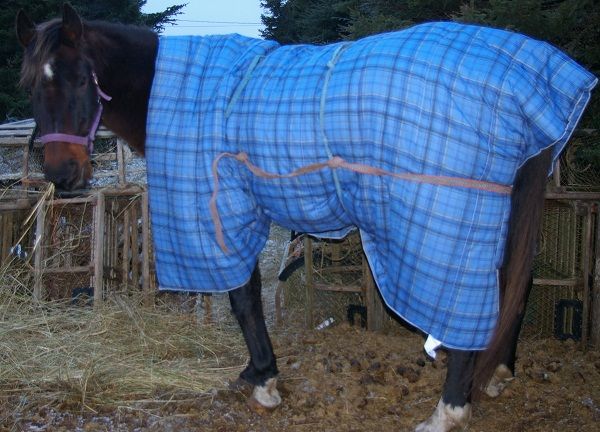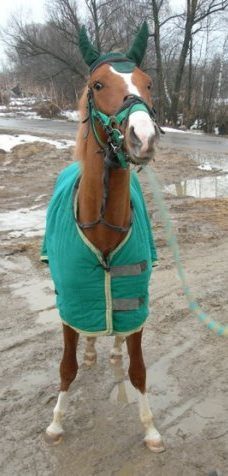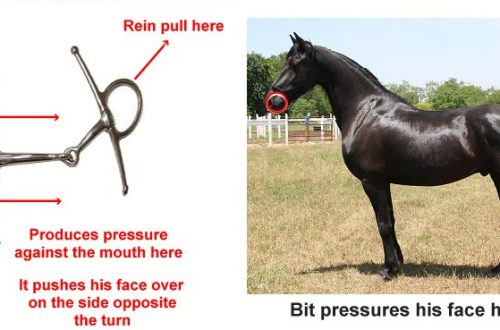
Do-it-yourself horse blanket
With the onset of frost, horse owners often face the question of how to warm their pets and make their wintering more comfortable. And although horse harness stores, fortunately, have a large selection of blankets for every taste and wallet size, I’m willing to bet that many of us have thought more than once: why not make a blanket yourself?
So, what if you need to create a semblance of blankets quickly and cheaply?
The easiest thing is to buy a trock and find a blanket. It can be flannelette, camel, synthetic winterizer or fleece. The main thing is that the material is warm and absorbs moisture.
Choose the size of the material so that it covers the chest and loins of the horse. On the chest and under the tail, if desired, you can make straps so that the design holds better.
Another thing is if we want to sew a real blanket. Then, first of all, you should take care of the pattern and taking measurements from the horse. And before you start working on your own masterpiece, it is best to analyze the finished blanket.
As a result, we get something like this picture (see diagram):
Before us is the left side of the blanket. Let’s consider it in more detail.
KL – the length of the blanket (from the extreme back to the grip on the chest).
Note that KH=JI and is the size of the scent you want to leave on the horse’s chest.
AE=GL – this is the length of the blanket from the beginning of the withers to the tail.
AG=DF – the height of our blanket. If the horse is heavily rebuilt, these values may not match.
If we want to do something more serious than an elementary blanket cape (for example, from fleece), then we should think about a more accurate pattern. To do this, you will have to take measurements from the back of the horse.
So, AB – this is the length from the highest to the lowest part of the withers (the place of its transition to the back).
Sun is the distance from the lowest point of the withers to the middle of the back.
CD – the distance from the middle of the back to the highest point of the lower back. Respectively, DE – the distance from the waist to the ribs.
AI – the distance from the top of the withers to the beginning of the horse’s neck. Note that the line is not a straight line.
Points I и H, if you draw a vertical along them, are at the level of the horse’s dewlap.
IJ=KH – here we must focus on the width of the horse’s chest and how deep the smell we want to make (we can use Velcro or carabiners as a fastener).
Please note: there are rounded lines in the pattern. In our case, you will have to navigate by eye, because we are not professionals. It is important to remember that the more gentle arcs are used in the pattern, the less likely to be an error.
If we want to sew a blanket as close as possible to the figure of a horse, we will have to make tucks on the “croup”. They will be located from the horse’s maklok to the hip, symmetrically. It is most convenient to determine the exact location and length of the tucks after the blanket has been sour and all its dimensions have been finally calculated, otherwise the tucks may not match. It will be possible to draw them with soap on the fabric, directly trying on the blanket blank on the horse.
Now we imagine the pattern. What else needs to be considered?
It’s a good idea to draw a pattern pattern on the fabric with soap and sweep it along the contour. Be sure to leave some margin for seams, hem, etc.
It remains only to decide the issue with the clasp on the chest, straps under the belly and tail (whether your horse will need them or not), and also add decorative elements. You can sheathe the blanket along the edges and back with a border (very convenient to use a sling), sew on appliqués.
I usually use velcro as a fastener on the chest – I like to make the blanket more wrapping so that the horse’s chest is additionally warmed. If you opt for carabiners, then this is not a problem either: you can buy carabiners of any size in fabric stores. The main thing is to correlate the dimensions of the carabiner and the width of the sling / strap that you decide to thread into it.
In order for the blanket to be warmer, you can make a lining for it. If there is a desire to insulate the blanket completely, the lining can be increased and stitched to the entire material. But since the main thing for us is to protect the chest, back, shoulders and loin of the horse, it is quite possible to use lining material only in appropriate places.
Working with large volumes of fabric can be a challenge for a beginner. Therefore, remember: the main thing in the process of sewing our large, warm and beautiful blanket is calmness and focus on results.

Maria Mitrofanova





